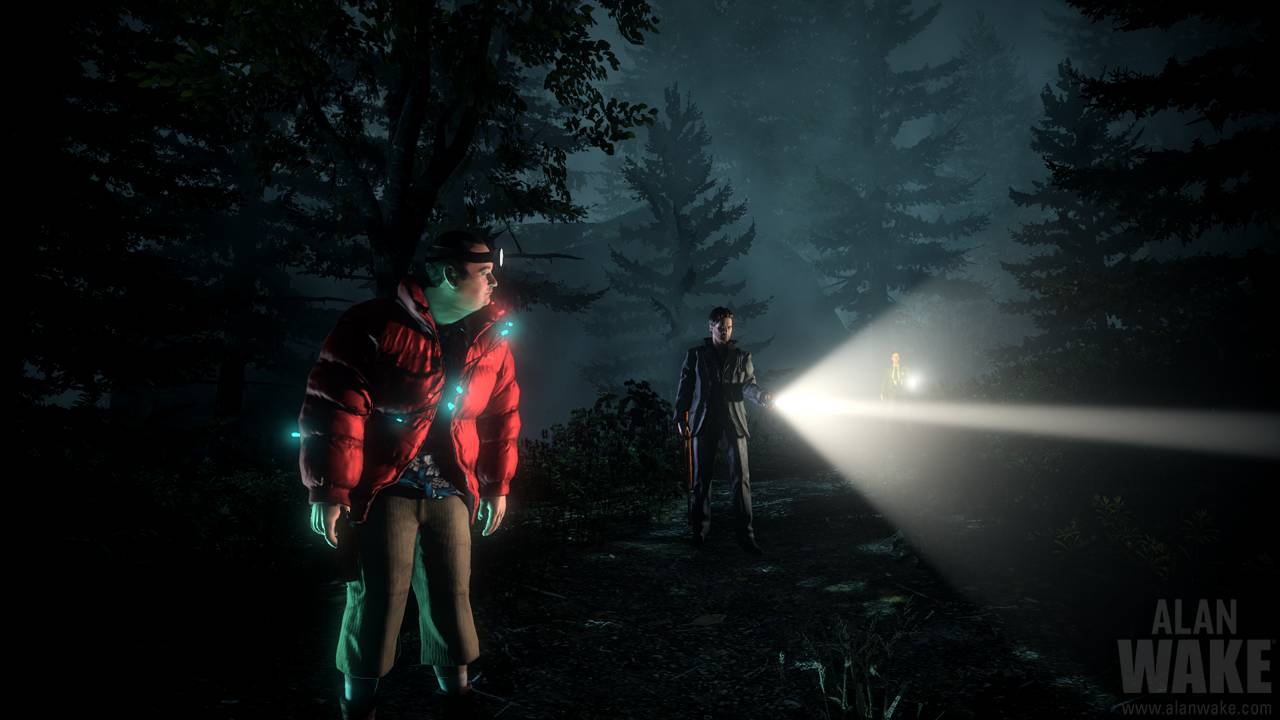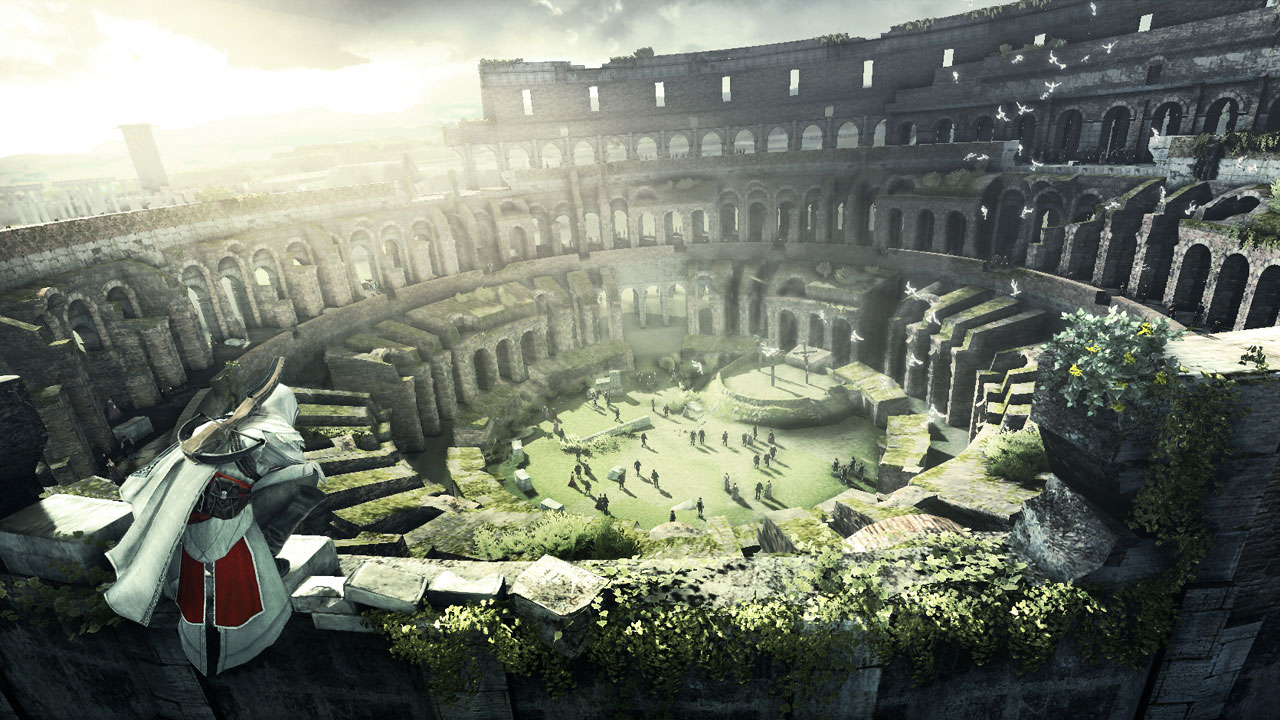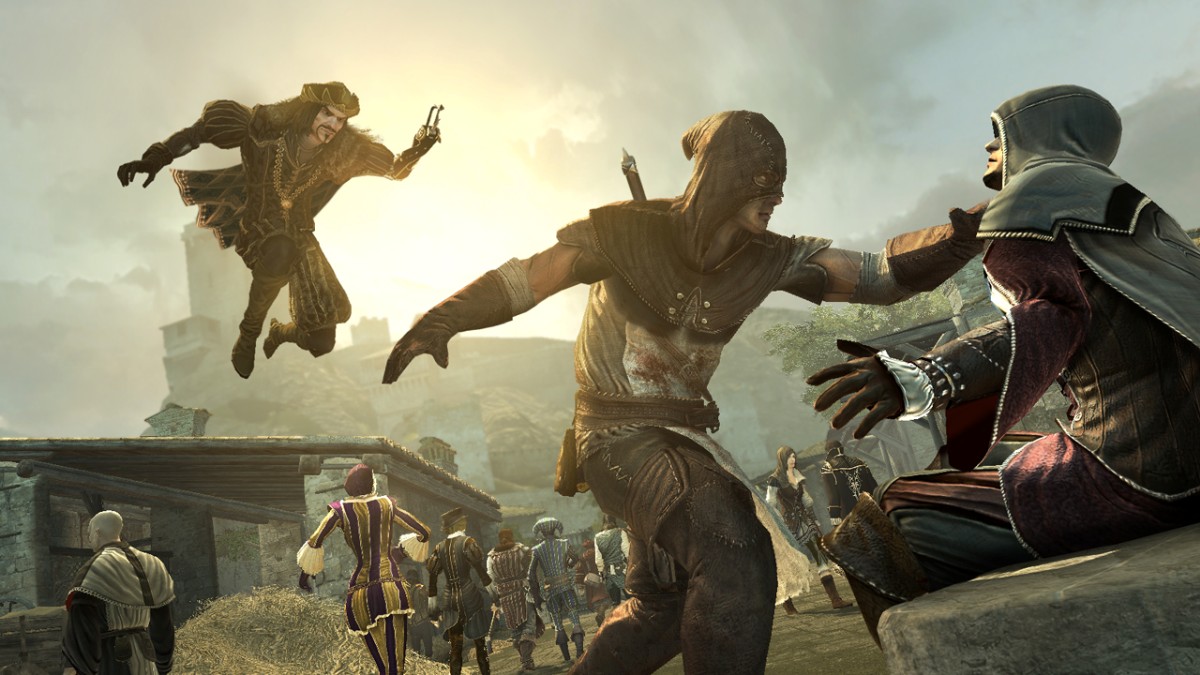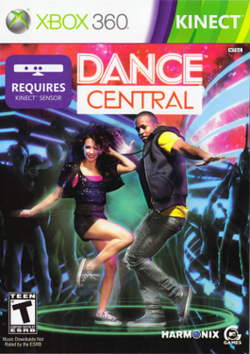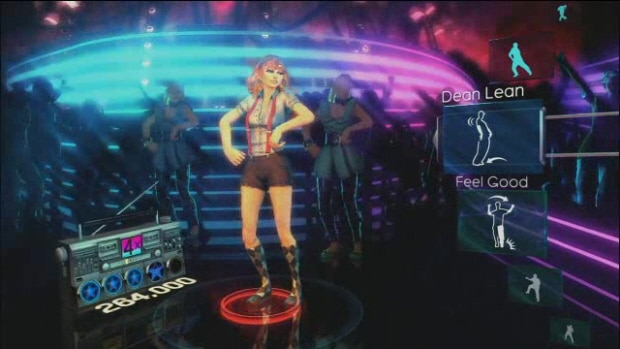Alan Wake
Xbox 360
Developer: Remedy Entertainment
Publisher: Microsoft Studios
Release Date: May 18th, 2010
Pros:
- General atmosphere is haunting and perfects the fear of the dark
- Incredible visuals, from character models to environments
- Plenty of moments stick with you well after you pass them
- Array of weaponry used in unique way to fight off the dark
- Use of "Episodes" just one example of the great presentation used in the game
- Laughable dialogue and delivery
- Dodging is a little "iffy" at times
- Driving sequences feel out of place
- Just when you have the rhythm down, it's over
The survival horror genre of gaming typically contains heart-pounding, edge of your seat intensity; where bullets are precious and safe rooms are a sigh of relief. Alan Wake takes the simplest of rational fears and turns it into one of the more unique IPs I have played this year.
Welcome to Bright Falls
Alan Wake is a successful writer that has been stuck with writer's block for the better part of 2 years. Looking to get away from it all, he agrees to an offer from his wife to get away from the city to the small town of Bright Falls. Once there, his wife is taken by a mysterious darkness, and Alan sets off to rescue her and figure out how these strange nightmares are coming to life.
The story works like a good horror/mystery should, in which you will continue guessing until the very end. Where the general presentation of the game is stunning, you occasionally get pulled out of the story by some overly ridiculous entity or dialogue (I was laughing pretty hard at the magical scuba diver...can't make this up people). The cheesy dialogue and occasional bad delivery of a line or two will make you roll your eyes, but it's compelling enough to keep you wondering until the end.
On the Next Episode of Alan Wake...
If there is one thing Alan Wake does right, it's the overall presentation of the game. Playing through you get the feeling of helplessness and desperation as you run low on bullets. The Dark Presence, as the game calls it, is signaled by a increase in fog and wind. Each time it happened I found myself panning the camera around, looking for where the shadows would attack. This constant fear of the enemy and desperate sprint from point A to point B marked the high point of the game, in making me continually guess what would be thrown in my path next.
Contributing to that element are the soundtrack, visual appeal, and episodic layout of the game. Instead of typical "Chapters" in a game, Alan Wake uses "Episodes" which contain their own cliffhanger endings. Starting the next episode brings about a recap of the previous one before moving into gameplay. This gave the game a feeling that I was playing through a Sci-Fi Original Series and not a video game.
The soundtrack accompanying the game sets the mood accordingly; giving somber anthems for the trek through the woods and a heightening tone for when The Dark Presence closed in with a few licensed tracks to round out each episode. For a game based on light and dark, the visuals are incredibly appealing. There are daylight segments in addition to the shadowy explorations you encounter. Naturally a game playing on light and dark has a lot going for it when it comes to eerie shadows with a small glimpse of light peaking through the trees.
This is my Flashlight! There are many like it, but this is my own!
Combat is not the typical run and gun. Most of the time you find yourself fighting human enemies overtaken by The Dark Presence. Light acts as your primary weapon. First you shine the flashlight at the enemy to destroy the darkness enveloping them, and plug a few rounds in them to finish them for good.
Your typical armory is in place for this setting; a revolver, hunting rifle, and shotgun act as the primary weapons. In addition to those, less harmful objects actually do much more damage. Flares drive enemies back to give you breathing room, flash grenades now act as actual grenades in turning them to dust, and the seemingly pitiful flare gun acts as a rocket launcher in destroying multiple enemies in a pretty red sparkle.
On the more difficult settings, fighting is not always the answer and you must flee to the next safe zone consisting of a generator or light source of some kind. Most of the bigger baddies take multiple rounds to take down and are relentless in pursuing you. There is a dodge button in place in case one of the entities gets too close to comfort, but I found it somewhat useless when more than 2 enemies are on you. The timing seems a bit off, but it works for the most part.
I'm Picking Out a Thermos for You
One thing you notice going through the game is the insane amount of collectibles. Manuscript pages act as "fortune tellers" depicting scenes yet to come and events occuring in other places. The other bulk of collectibles are the numerous coffee thermoses. Counting just these two items, that's well over 220+ of the items available...
In addition to coffee and pages there are history markers, pyramids of cans, radio shows, and even television shows. Needless to say you won't catch them all in one playthrough, offering a sense of replay value in finding them all. Still...one has to wonder why the thermos is so popular.
And Then it Hit Me
Right when you start to enjoy the game...it's over. Clocking in at six episodes, most taking an 1hr to 2hrs depending on your play style, it's no full season of a show. Though two DLC episodes have been released to continue past the cliffhanger ending, it left a little to be desired.
Another issue that popped up for me was being hit and not even seeing it coming. Though I admit some were my fault, many of the hits felt like cheap shots. The game tended to focus in a chainsaw enemy crashing through a wall, naturally making me assume, "Hey...watch out for that guy." The game did little to focus in on the tiny dude with knives that spawned right behind me and ended my life in two quick stabs on Nightmare difficulty. The checkpoints are lenient enough for me to overlook this, but I still scratched my head at how easy it is to be attacked behind my back; as the camera does little to assist in this matter. Occasionally it would pan out to show an enemy nearby, but in a hectic fight already in progress you are on your own.
When you are not fighting off baddies, solving simple puzzles we've seen before, or looking for another thermos; you are driving. Driving feels unnatural, as every car I picked up had zero traction to the road. I think the roads in Bright Falls are constructed of dirt and butter. While I get they were trying to mix up gameplay a bit, they were never my favorite segments of traversal, but only popped up a few times.
Overall
Alan Wake marks itself as one of the more unique IP this year, satiating anyone's thirst for a solid survival horror game. You will be quick to pick out favorite moments you will want to see again as well as play on a more difficult setting to truly get the best out of the game. Regardless, the game suggests a possible franchise, and it's one I would happily recommend.





